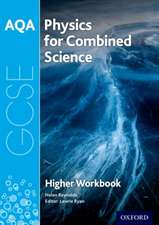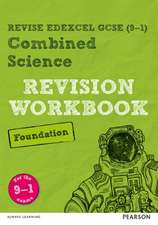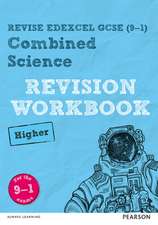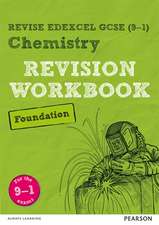Radar Cross Section Measurements
Autor Eugene F. Knotten Limba Engleză Paperback – 4 aug 2012
Preț: 958.38 lei
Preț vechi: 1168.76 lei
-18% Nou
Puncte Express: 1438
Preț estimativ în valută:
183.39€ • 191.95$ • 152.64£
183.39€ • 191.95$ • 152.64£
Carte tipărită la comandă
Livrare economică 31 martie-14 aprilie
Preluare comenzi: 021 569.72.76
Specificații
ISBN-13: 9781468499063
ISBN-10: 1468499068
Pagini: 564
Ilustrații: XIV, 546 p. 301 illus.
Dimensiuni: 152 x 229 x 30 mm
Greutate: 0.82 kg
Ediția:Softcover reprint of the original 1st ed. 1993
Editura: Springer Us
Colecția Springer
Locul publicării:New York, NY, United States
ISBN-10: 1468499068
Pagini: 564
Ilustrații: XIV, 546 p. 301 illus.
Dimensiuni: 152 x 229 x 30 mm
Greutate: 0.82 kg
Ediția:Softcover reprint of the original 1st ed. 1993
Editura: Springer Us
Colecția Springer
Locul publicării:New York, NY, United States
Public țintă
ResearchDescriere
The original campus of the University of Michigan was nearly a perfect square about a half-mile along a side. A street-sized walk, appropriately called the Diag, runs diagonally across this square, connecting its southeast and northwest corners. In 1904 a new engineering building was either started or finished (I do not remember which) to house classrooms. When another engineering building was built on the expanded campus across the street from it many years later, the old building came to be known as West Engine, to distinguish it from the new East Engine. Old West Engine is (or maybe by now, was) a four-story, L-shaped structure that stood at the southeast corner of the original campus. It was built with an arch in it to straddle the Diag at the apex of the L. You walked over the Engineering Arch to get from one leg of the L to the other if you were inside the building, and you walked under it when you entered the campus from the southeast corner. Affixed to the masonry wall of the arch was a plaque I often noted in passing. It bore a quote attributed to Horace Greeley (1811-1872), who I did not know at the time was the founder, editor, and publisher of the New York Tribune. It said, simply, Young man, when theory and practice differ, use your horse sense. The suggestion seems worthy of an exclamation point instead of a period, but I do not remember if it had one.
Cuprins
1 Radar Cross Section Fundamentals.- 1.1 The Need for RCS Measurements.- 1.2 Electromagnetic Wave Properties.- 1.3 The Radar Range Equation.- 1.4 Radar Cross Section.- 1.5 Polarization Scattering Matrix.- 1.6 Basic Test Range Requirements.- 1.7 Summary.- 2 Instrumentation Systems.- 2.1 The CW Cancellation Radar.- 2.2 The Noncoherent Pulsed Radar.- 2.3 Coherent Radars.- 2.4 Multiband Scattering Matrix Radars.- 2.5 Digital Functions in Multiband Radars.- 2.6 Summary.- 3 Target Support Structures.- 3.1 Foam Columns.- 3.2 String Supports.- 3.3 The Metal Pylon.- 3.4 Other Structures and Techniques.- 3.5 Summary.- 4 Measurement Errors.- 4.1 Instrumentation and Sensitivity.- 4.2 Target Illumination.- 4.3 Background Contributions.- 4.4 Target—Environment Interactions.- 4.5 Summary.- 5 Calibration.- 5.1 Instrumentation Calibration.- 5.2 Calibration Scatterers with Curved Surfaces.- 5.3 Calibration Scatterers with Flat Surfaces.- 5.4 Calibration by Substitution.- 5.5 Summary.- 6 Outdoor Test Ranges.- 6.1 Ground-Plane Configuration.- 6.2 Two-Path Propagation.- 6.3 Effect of Antenna Pattern.- 6.4 Imperfectly Reflecting Ground Planes.- 6.5 Defeating the Ground Plane.- 6.6 Summary.- 7 Indoor Chambers.- 7.1 Wall Reflections.- 7.2 Chamber Configuration.- 7.3 Chamber Absorbing Materials.- 7.4 Test Chamber Evaluation.- 7.5 Summary.- 8 Compact Ranges.- 8.1 Dielectric Lenses.- 8.2 Large Reflectors.- 8.3 Reflector Edge Configurations.- 8.4 Dual-Reflector Configurations.- 8.5 Chamber Diagnostics.- 8.6 Summary.- 9 Data Processing and Reduction.- 9.1 Statistical Measures.- 9.2 Hard-Target Characteristics.- 9.3 Display Formats.- 9.4 Background Subtraction.- 9.5 Summary.- 10 Radar Imagery.- 10.1 Radar Imaging Principles.- 10.2 The Range Profile.- 10.3 Zero-padding and Windowing.- 10.4 The Cross-Range Profile.- 10.5 Image Formation and Diagnostics.- 10.6 Summary.- 11 Dynamic Test Ranges.- 11.1 The Instrumentation Radar.- 11.2 Dynamic Target Imaging.- 11.3 The Tracking Radar.- 11.4 Metric Data.- 11.5 Some Dynamic RCS Test Ranges.- 11.6 Summary.- 12 Scale-Model Testing.- 12.1 Scaling Laws.- 12.2 Dielectrics and Absorbers.- 12.3 Metallic Coatings and Resistive Sheets.- 12.4 A Specific Full-Scale/Scale-Model Comparison.- 12.5 Summary.- 13 Test Security.- 13.1 General Requirements.- 13.2 Target Shelters.- 13.3 Range Security.- 13.4 The Black Program.- 13.5 Summary.












